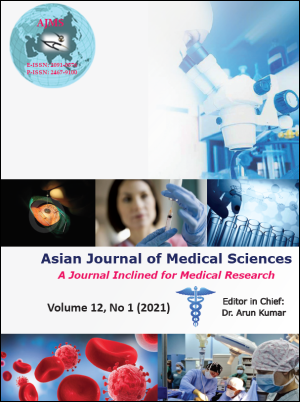Pre-Operative MRI in evaluation of Perianal fistulas
Keywords:
Perinanal fistula, Preoperative MRI, Perianal fistula gradingAbstract
Background: Perianal fistula is a common and often an extremely distressing disorder. MRI is a preferred modality for the preoperative assessment of perianal fistulas.
Aims and Objective: To evaluate the accuracy and predictive values of pre-operative MRI in diagnosing severity of perianal fistulas and the conditions associated with it like internal anal opening, secondary tract, abscess and supralevator extension.
Materials and Methods: In this study, 44 patients with clinically suspected perianal fistulas underwent MRI for the evaluation of severity and presence of the associated conditions. St James’s University Hospital Classification was used to grade the perianal fistula. Pre-operative MRI grading was compared with the surgical findings in the 26 operated patients.
Results: Out of 44 clinically suspected perianal fistulas, 41 (93%) were diagnosed as perianal fistulas by MRI. The most common type was grade 1 seen in 12(27.3%) patients followed by grade 4 fistula seen in 10(22.7%) patients. All 26 patients evaluated by surgical findings for severity of perianal fistulas were found to be graded in identical grades by pre-operative MRI. MRI was 100% sensitive in picking up all five grades.
Conclusion: MRI helps in the accurate delineation of fistulous tract, identification of secondary tract and abscess.
Downloads
Downloads
Published
How to Cite
Issue
Section
License
Authors who publish with this journal agree to the following terms:
- The journal holds copyright and publishes the work under a Creative Commons CC-BY-NC license that permits use, distribution and reprduction in any medium, provided the original work is properly cited and is not used for commercial purposes. The journal should be recognised as the original publisher of this work.
- Authors are able to enter into separate, additional contractual arrangements for the non-exclusive distribution of the journal's published version of the work (e.g., post it to an institutional repository or publish it in a book), with an acknowledgement of its initial publication in this journal.
- Authors are permitted and encouraged to post their work online (e.g., in institutional repositories or on their website) prior to and during the submission process, as it can lead to productive exchanges, as well as earlier and greater citation of published work (See The Effect of Open Access).




